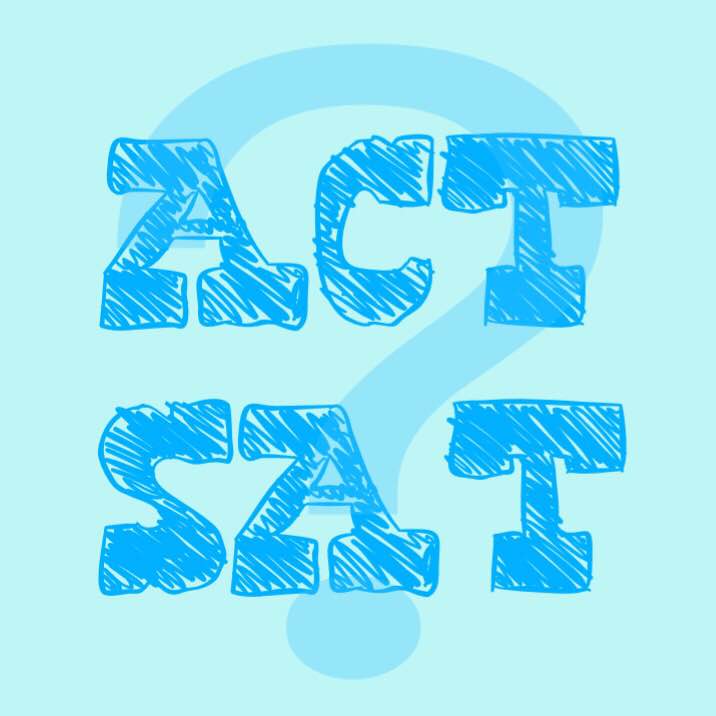SAT & ACT: What to know before you take the tests
Taking ACT or SAT test is part of application process. Almost all students are required to take the test. But when is best time to take the test? How many times should a student take the test?
Which Is Better For You?
| ACT (American College Test) | SAT(Scholastic Aptitude Test) | |
| Website | www.act.org | www.collegeboard.org |
| Sections | English Math, Reading, Science and Writing (optional) | Mathematics, Reading,Writing and essay(optional). |
| Purpose | Achievement test assesses knowledge that students learned in high school |
Reasoning test measures students’ ability of literacy and writing skills assesses how well a student analyzes and solves problems |
| Full Score | 36 | 1600 |
| Location | more popular in the Midwest and the South | popular on the East and West coasts |
| Time | 3 hours 25 minutes ( include writing)
Six times a year(February, April, June, September, October, December) |
3 hours 50 minutes ( include essay)
Seven times a year(January, March, May, June, October, November, December) |

Mr. Steve Stevenson has some advice for Cotter students as they think about which test to take.
“At least take one ACT and SAT in the spring of junior year. Take the ACT either in February or in April. Take the SAT in March or in May. Get familiar with the tests. See which test is better for you and stick with that one. Usually three times is enough. For some people, twice is good,” Stevenson said.
“I don’t encourage students take the test before the spring as juniors, because they have PSAT to take at that time.”
 Cotter senior Sammy Knight has excellent ACT test scores and also has invested time into how best to take these tests.
Cotter senior Sammy Knight has excellent ACT test scores and also has invested time into how best to take these tests.
“I took my first ACT test in the December of my junior year. This was a mistake as it occurred directly before semester finals. It was difficult balancing studying time between the ACT and the other tests that were looming on the horizon. It would have been better if I had taken it earlier during the fall, ” Knight said.
“The second time I took the ACT was during the June of my junior year. This was another poor decision as there was again a conflict with studying for finals. Even so, I was as still able to increase my score, despite the generality that most do not in the June test. This could possibly just be a question of willingness to study after school has ended (the June test occurs about 1-2 weeks after Cotter’s summer break begins). I would guess that most would rather enjoy the summer and resume their lives the moment break begins, but for me, school is my life. Thus, while I would still not suggest taking the ACT during June, it is still possible to do well on this date.”
“I will be taking the ACT a third time on October 22. It would have been better if I had begun studying immediately after my June test date in preparation for taking the September test date. This would have allowed me to use this latest score in Early Action and Early Decision applications. Be that as it may, the October test scores will still be useful for Regular Decision applications. In total, I will have taken the ACT 3 times”
“The best times to take the ACT are at the end of junior year and the beginning of senior year. Anyone looking for a good score should avoid the June testing date as people generally score lower on that day compared to others. It may be a good idea to also take the test at the beginning or the middle of junior year. This extra round can help build familiarity and confidence with the test that could help increase performance on the later two trials,” Knight said.
Knight also had thought about how often a student should take the tests.
“A student should take it 2-3 times. However, additional measures of preparation should be added if a student wishes to take it more than two times. Generally, scores will increase from the first to the second attempt as the student will have a better idea of what to expect and how to prepare after taking the test once as a sort of ‘practice round’. After this initial jump, scores will likely remain stagnant unless a purposeful change in studying is implemented. This could mean anything from investing more time in reviewing material to enrolling in a preparatory class.”
In making decisions about taking these important tests students should have general ideas which schools they are interested in by the end of their 10th grade and figure out what’s the minimum score that they need in order to get into the universities.
Students who want to get into the top schools should at least take the ACT or SAT once by the second semester of their junior year. Students should take the ACT in February and SAT in March. If possible and they are not satisfied with the score, they should take the following one before summer break. Make sure to study before the second one.
In senior year, if their score is not satisfied, take the October SAT or ACT. Try to avoid December test, because at that time students are busy with filling out applications and writing personal essays, etc. Also, the top schools may ask more materials than other schools.
Time is is a limiting factor, the more students get done as a junior, the less they need to do as seniors.
As for this reporter, I took ACT in April and SAT in Mary when I was a junior just in order to meet my junior requirement for my previous school without any preparation. My score is not high enough to meet the requirement of the top schools. Then I took the October SAT, and it is hard for me to apply EA( Early Action) and ED(Early Decision), because I won’t be able to send my score until the deadlines are met. I have to predict my score, which means I will take risks to apply school. I will take the November SAT and just in case my October SAT is low.
Students who does not plan to get into the top schools will be a little bit easier. If you are willing to take the ACT or SAT as a junior that’s great. If not, make sure you take the October ACT or SAT, or December ACT or November SAT.











